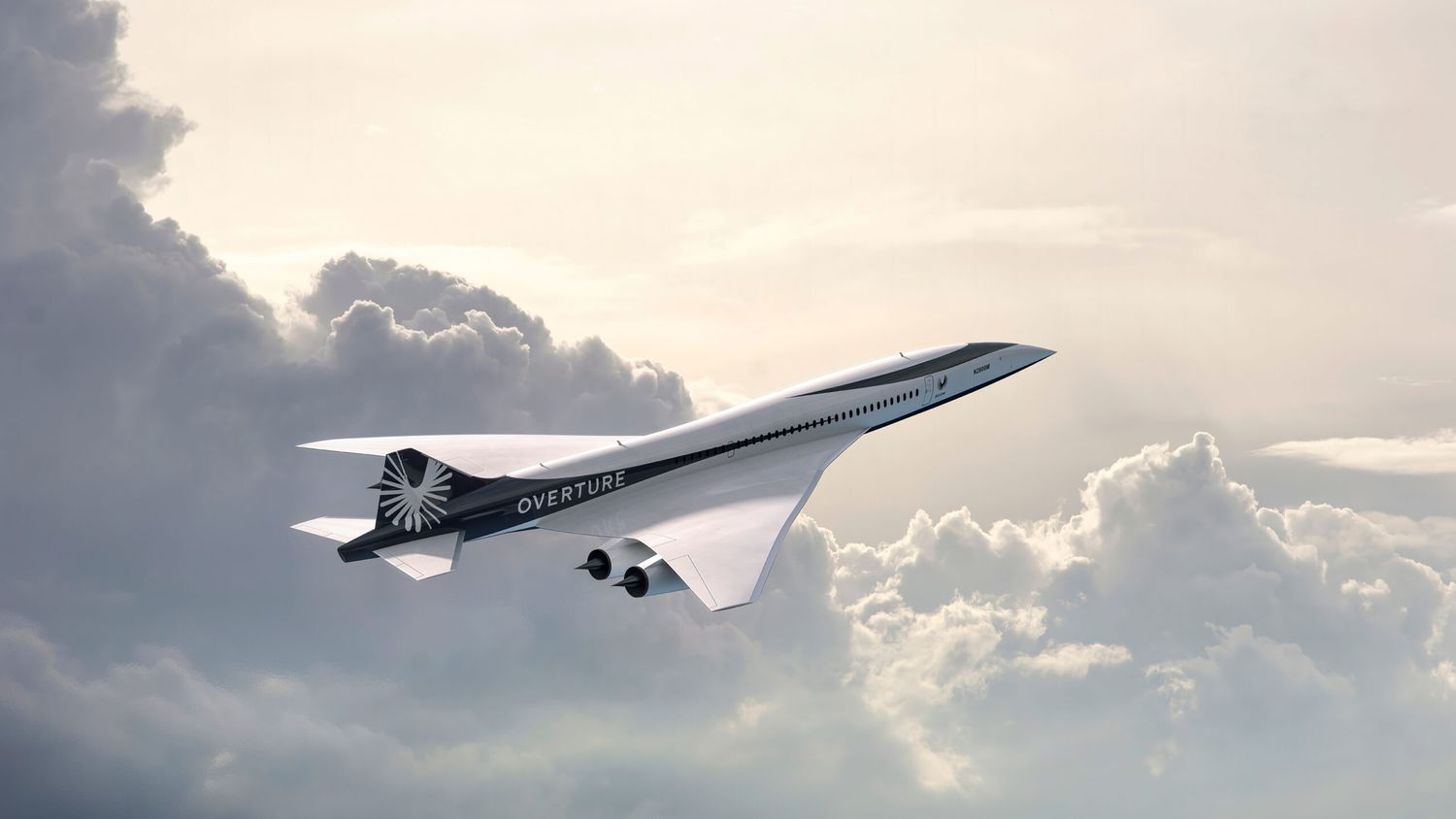FARNBOROUGH, UK- At a press conference on the morning of the second day of the Farnborough Air Show, Boom Supersonic unveiled a redesign of its flagship Overture aircraft, while announcing agreements with key industry suppliers.
However, configuration changes and a lack of key definitions cast a shadow over the project: already in the second half of 2022, and with a production start date scheduled for 2024, the company is still not revealing which manufacturer will provide the -now- 4 supersonic engines that the Overture needs.
When asked at the presentation, Boom Supersonic CEO Blake Scholl played the mystery game: «we have made advances -in relation to the engine- that we will not reveal yet», although he did clarify that the engine (which does not yet exist, nor does it have a designated manufacturer) will be able to operate with 100% Sustainable Aviation Fuel (SAF).
He also announced that the Overture will use the first automatic noise reduction system, which will allow it to comply with current noise pollution standards, taking off without the use of afterburner.

The partner show
Boom also announced that Northrop Grumman, Collins Aerospace, Eaton and Safran are joining the project, contributing different capabilities.
Of course, Safran is not joining as the engine manufacturer, but in a couple of key systems: the landing gear and brakes. Collins Aerospace will provide ice protection systems and data architecture.
The real gem of the signed agreements is undoubtedly Northrop Grumman, which will look to sell the Overture to government and military customers.
«Time is a strategic advantage in high-consequence scenarios, from emergency evacuations to disaster response,» Scholl said. «This collaboration between Boom and Northrop Grumman unlocks Overture’s potential to provide the United States and our allies with unmatched high-speed capability when and where it is needed most.»
The release said, «Together, the two companies will pursue new use cases for Overture to support government and military operations requiring rapid response, including quick-reaction surveillance and reconnaissance, command and control, as well as mobility and logistics missions, such as troop transport and emergency medical services.» The USAF already invested some $60 million in preliminary studies, although the design change will surely need to add some work to those studies.
«Bringing together Northrop Grumman’s air defense systems integration expertise with Boom’s next-generation supersonic Overture aircraft makes a lot of sense,» said Tom Jones, president of Northrop Grumman Aeronautics Systems.
«Together, we can ensure that Overture’s military variants are tailored to missions where advanced system capabilities and speed are critical,» he added.

A risky timeline
The idea is, then, that after the construction of the «superfactory» announced earlier this year and to be installed in Greensboro (North Carolina) and the start of production in 2024, the aircraft will be ready for rollout in 2025 and its first flight in 2026, with the expectation of entering service in 2029. In times of aeronautical design, an extremely ambitious plan, bordering dangerously on the unachievable.

To achieve that timeline, Boom had to sacrifice several items on his initial wish list: He added an engine, eliminating the tail implanted one, and gained volume in his fuselage, as it would have to carry the additional fuel somewhere.
On the other hand, he found an innovative solution to the problem of supersonic flight over land, banned by the FAA in Section 91.817 in August 1989: the Overture simply won’t fly supersonic over land, which limits its maximum capability to operate at Mach 1.7 to the oceanic crossing.
This condition will limit the Overture to specific markets where a body of water will allow it to take advantage of what sets it apart: specifically, and primarily, the market for flights between the U.S. East Coast and Europe. The same market that Concorde had, and which ceased to operate because it lacked sufficient profitability to be sustained over time.
And that, in a world where companies still depended on corporate travel, long before e-mail and videoconferencing made real-time interaction possible. And, even more recently, in a world where a pandemic has taught us that remote work is as – or more – efficient as face-to-face work.
I’m not saying that there are no extremely important meetings that can only be face-to-face where millions of dollars are at stake. But if the volume of such meetings was low in the Concorde era, it will probably be even lower in 2029. With a $200 million asking price and a limited market, is there room for Overture in the future?
Scholl was saying on social media today that the Overture would be «the child of the 747 and Concorde.» Considering that the Aerospatiale-BAC Concorde has not operated for almost 20 years and the last Boeing 747 will be leaving the production line very soon, it is hard to know if that phrase was a compliment or an omen.


Comentarios
Para comentar, debés estar registrado
Por favor, iniciá sesión